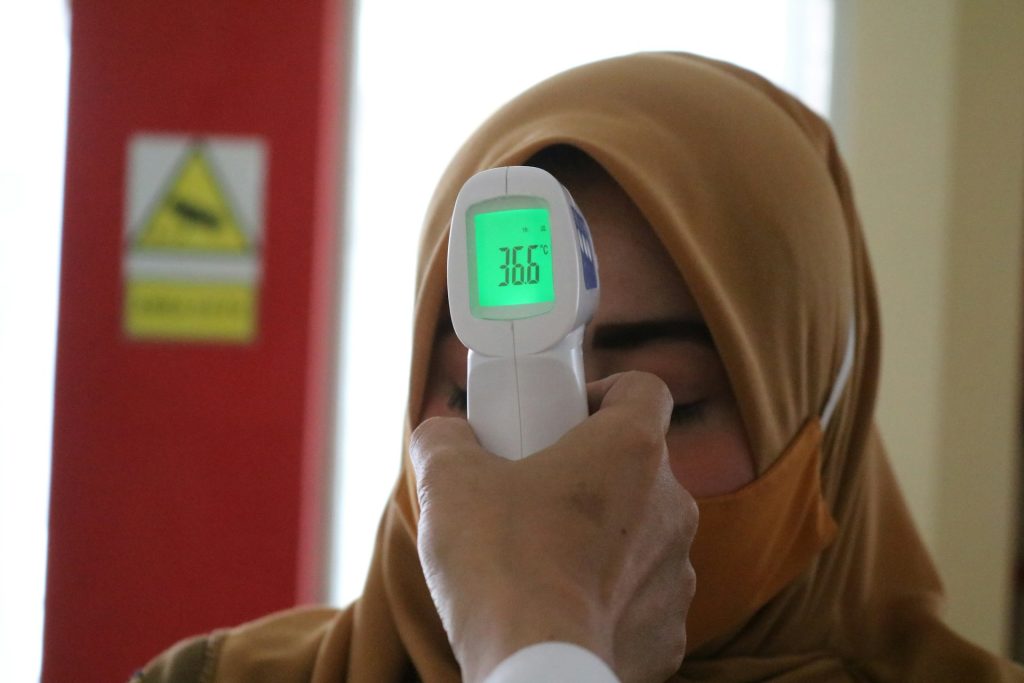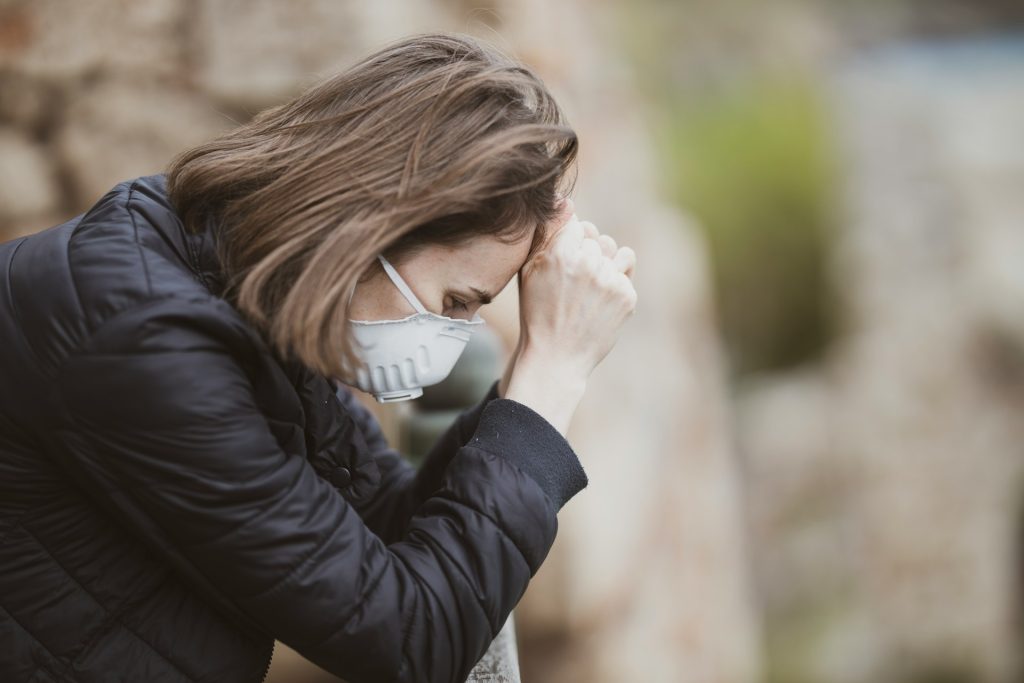Fevers make you feel terrible. You might have body aches and fatigue, or maybe you’re caring for a child that’s sick and restless. Whether it’s you or your child, spiking a fever sets you up for hours — or sometimes days — of misery.

Do you have to wait for a fever to “run its course”? Or can you do anything to break it faster? Whether you’re checking your child’s temperature and you’re concerned about their fever, or you’ve got a fever of your own, Neha Vyas, MD, a family medicine physician, explains how to break a fever and get you feeling better in no time.
How to Break a Fever
You can break a fever by getting plenty of rest, drinking fluids, using blankets if you have shivers or an ice pack if you’re too hot, and by taking medications like acetaminophen or ibuprofen. But in most cases, you don’t necessarily have to break a fever. They often handle themselves, especially if you feel okay and have a mild illness.
In children, it’s a common myth that fevers often cause seizures and brain damage. Febrile seizures can happen in up to 5% of kids under 5 years old, but there’s no evidence that they cause brain damage.
Still, lowering a fever may provide you with some much-needed relief. It could be enough to help you get some sleep or to settle a sick child. If you want to break a fever faster, these tips can help:
1. Rest: The Ultimate Healer
Resist the urge to tackle your to-do list when you have a fever. “Your immune system needs rest to work properly,” says Dr. Vyas. “Stay home from work or school and lie down whenever you can. If you try to do too much, your fever and illness could last longer.”
Sleep if you can. If you can’t sleep, curl up with a good book or listen to a podcast or audiobook instead. Your body heals when it’s at rest, so give it the downtime it needs to fight off the fever.
2. Drink Fluids: Hydration is Key
Hydration could help your illness — and fever — hit the road as quickly as possible. You’ll likely sweat more when you have a fever, and you need to replenish those fluids by drinking. Plus, every system in your body — including your immune system — needs fluids to function at its best.
“You can quickly get dehydrated if you’re not drinking during a fever,” says Dr. Vyas. “And when you’re dehydrated, it’s harder for your body to fight off an illness.”
Drink what sounds good to you, such as water, herbal tea, or maybe the occasional sports drink. But steer clear of caffeine, whether from soda, tea, coffee, or energy drinks. Caffeine makes you pee more, which could dehydrate you and interfere with your recovery. And try to eat something, too, as that old adage about “starving a fever” isn’t quite accurate.

3. Cool Off: Chill Out Literally
If you’re burning up, you don’t have to push through it. You can cool yourself or a child safely with a few home remedies:
- Apply a cold pack under your arm for up to 10 minutes at a time. Don’t use cold packs on babies or young children, though. They can’t always tell you if it’s too cold for their skin.
- Drink cold, non-caffeinated beverages or eat ice chips.
- Place a cool, wet washcloth on your forehead or the back of your neck.
- Take a room-temperature bath or shower that feels slightly cool to you.
“Skip the cooling methods if the fever is causing chills,” says Dr. Vyas. “You or your child will likely feel worse, and that won’t help you relax and heal.”
4. Warm Up, But Don’t “Sweat It Out”
Cuddle up with a blanket if you can’t stop shivering, but don’t pile on every quilt in the house.
“The old advice to ‘sweat it out’ doesn’t help and could be harmful,” says Dr. Vyas. “Too many blankets could raise your body temperature even more. Heating yourself up could also raise your risk of dehydration because you’ll likely start sweating.”
If you’re cold, get under your normal covers in bed, or throw a blanket around your shoulders. If you start to sweat or feel too hot, take them off. And be careful about bundling up a baby. Their bodies can’t regulate their temperature as well as older children and adults. Focus on keeping your baby comfortable, not hot.
5. Try Over-the-Counter Medications: Quick Relief in a Bottle
Nonsteroidal anti-inflammatory drugs (NSAIDs) like acetaminophen and ibuprofen can lower a fever and treat headaches or body aches. Before you take any medicine or give it to your child:
- Read the label and understand what dose to take, and how often to take it.
- Make sure you or your child aren’t taking any other medications that could interact with NSAIDs.
Aspirin can also lower a fever, but don’t give it to children under 18. Giving aspirin to children can cause Reye’s syndrome, a severe and potentially life-threatening condition.
Don’t use medications to lower your temperature just so you can head to work or send your kids back to school. In most cases, illnesses are still contagious for at least 24 hours after your fever breaks naturally without using medications. You could get everyone around you sick — and you’ll probably wear yourself out, which will likely make your fever last longer.
Are Fevers Different in Adults vs. Children?
Kids get fevers more often than adults, but fevers affect people of all ages. Regardless of your age, a fever is a sign that something else is going on — it’s not a disease itself.
“Fevers have similar causes in adults and children, such as viruses and infections,” says Dr. Vyas. “But we are more careful about fevers in babies. A baby can’t tell you how they’re feeling, so it’s harder to know what’s causing the fever. If you don’t know what’s ailing your child, call your pediatrician.”

Fevers are a natural part of your body’s defense system. While they can be uncomfortable, they often mean your body is working hard to fight off an illness. By following these methods, you can safely manage a fever and get back on your feet in no time!





